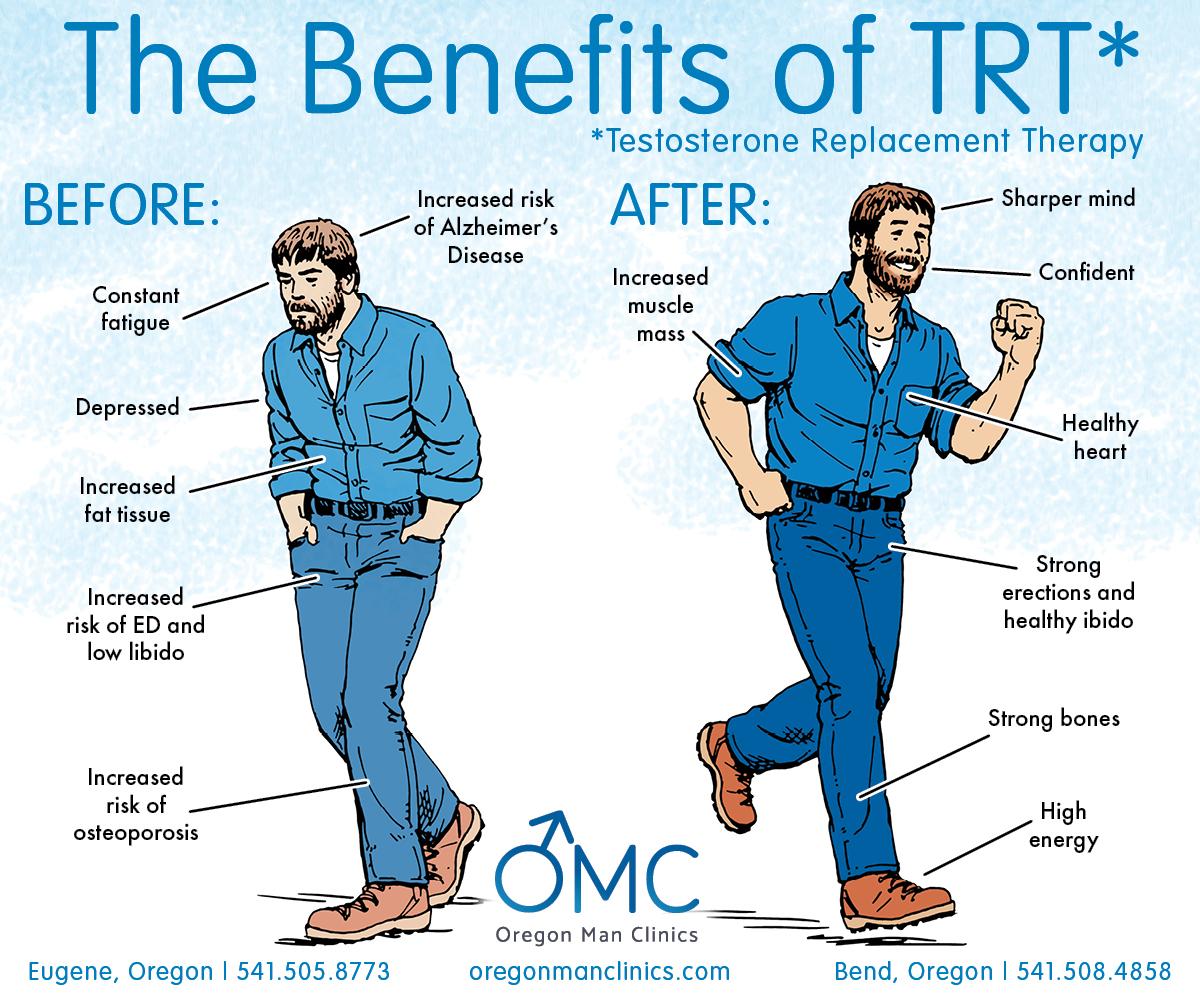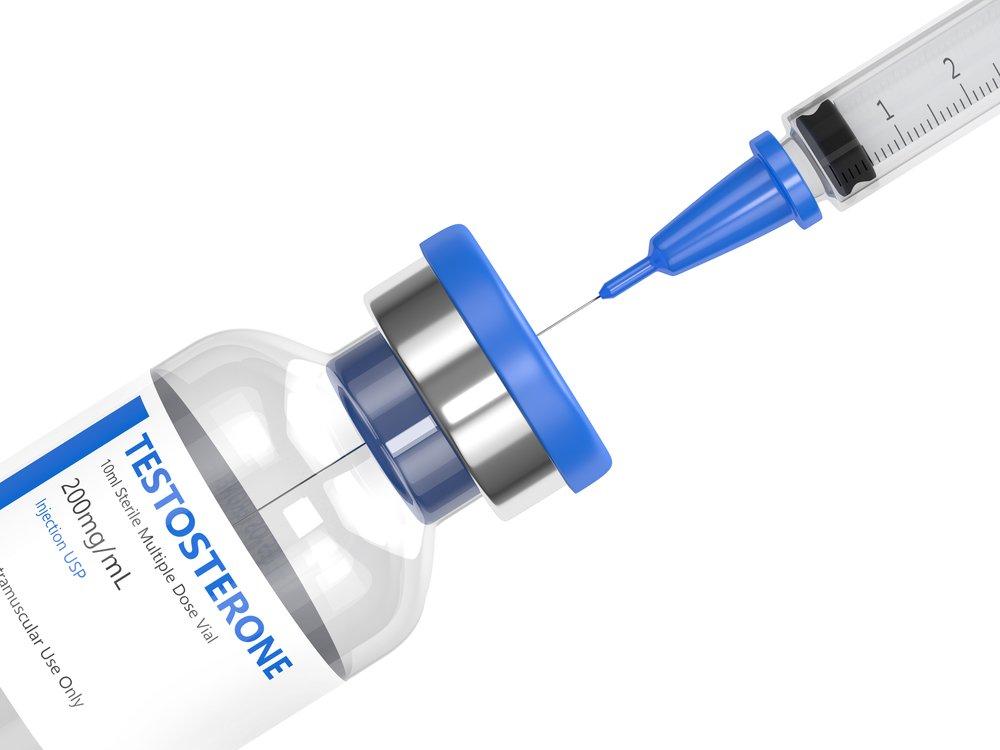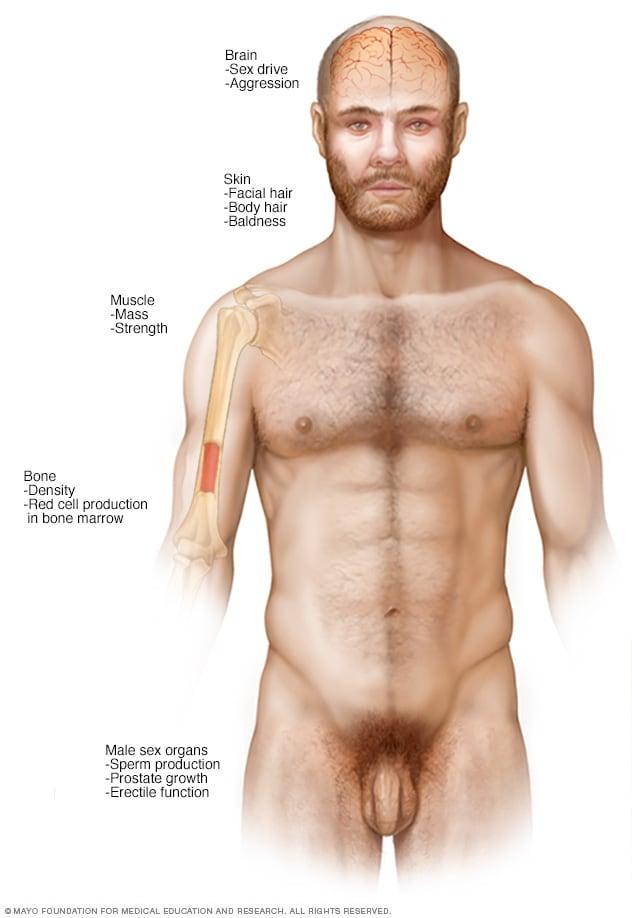In a world obsessed with optimizing every facet of human potential, from mental acuity to physical prowess, the quest for peak performance has sparked both intrigue and controversy. Among the myriad solutions vying for attention, testosterone therapy has emerged as a focal point, promising a path to enhanced vitality and strength. As men and women alike seek to reclaim their youthful vigor or break through performance plateaus, the science behind testosterone therapy invites both enthusiasts and skeptics to engage in a deeper dialogue. This article explores the intricate relationship between testosterone levels and performance, examining the benefits, risks, and ethical considerations inherent in harnessing this powerful hormone. Join us as we navigate the landscape of testosterone therapy, aiming to shed light on its role in the ongoing pursuit of excellence.
Exploring the Science Behind Testosterone and Performance Enhancement
The relationship between testosterone and athletic performance is backed by a wealth of scientific research, underscoring its pivotal role in physical prowess. Testosterone, a powerful androgenic hormone, influences various physiological processes that contribute to strength and endurance. Among its significant effects are:
- Muscle Mass Increase: Testosterone promotes protein synthesis, leading to greater muscle growth and repair.
- Fat Distribution: Higher testosterone levels can favorably alter body composition, reducing fat mass while increasing lean muscle mass.
- Bone Density: The hormone enhances bone density, reducing the risk of fractures during intensive training.
Moreover, testosterone plays a role in enhancing motivation and energy levels, crucial for athletes striving for peak performance. Variations in testosterone levels can also affect recovery times post-exercise. In a study showcasing these dynamics, subjects underwent various training regimens while monitoring their hormone levels. The results highlighted:
| Training Type | Average Testosterone Increase | Performance Improvement |
|---|---|---|
| Resistance Training | 15% | 20% Increase in Strength |
| High-Intensity Interval Training (HIIT) | 12% | 15% Improvement in Endurance |
| Endurance Training | 8% | 10% Boost in Stamina |

Indicators of Low Testosterone and the Need for Therapy
Recognizing the signs of low testosterone can be crucial for maintaining overall health and peak performance. Common indicators include:
- Fatigue and low energy levels: A significant drop in energy can hinder physical and mental activities.
- Decreased libido: A noticeable reduction in sexual desire may impact relationships and self-esteem.
- Loss of muscle mass: Difficulty in building and maintaining muscle despite regular exercise could signal hormonal issues.
- Mood changes: Increased feelings of irritability, depression, or anxiety can indicate hormonal imbalance.
- Difficulty concentrating: Cognitive decline or lack of focus can be a subtle sign of low testosterone.
When these symptoms manifest, it is important to consider therapy options. Hormone replacement therapy can be a game-changer for addressing low testosterone levels and restoring balance. Potential benefits include:
| Benefit | Description |
|---|---|
| Improved energy levels | Boosts overall vitality and stamina. |
| Increased muscle mass | Enhances strength and physical performance. |
| Better mood regulation | Stabilizes emotional health and reduces anxiety. |
| Enhanced cognitive function | Improves focus, memory, and mental clarity. |

Choosing the Right Testosterone Therapy: Options and Considerations
When considering testosterone therapy, it’s essential to understand the various options available to ensure you select the one that best meets your needs. Injectable testosterone offers rapid effects and can be tailored to a specific schedule, typically administered either weekly or bi-weekly. Conversely, transdermal patches and gels provide a more steady release of hormone levels, making them an appealing choice for those seeking convenience and consistent results. Additionally, pellets, which are implanted subcutaneously, release testosterone slowly over several months, providing a hands-free approach that many find attractive. Understanding these options can help individuals tailor their therapy regime to enhance performance without the hassle of daily dosing.
However, the journey to optimal testosterone therapy is not just about selecting a method; it also involves weighing several important considerations. Personal health history, potential side effects, and dosage adjustments should be discussed thoroughly with a healthcare professional. Factors influencing the decision may include:
- Age – Younger patients may respond differently than older individuals.
- Previous treatments – Any past experiences with hormone treatments should be factored in.
- Side effects profile – Understanding the risks is crucial for informed choice.
In selecting the right therapy, it’s vital to monitor your response through regular check-ups and lab tests, ensuring that testosterone levels remain within the desired range. The table below summarizes the key features of each therapy option:
| Therapy Option | Administration | Duration | Considerations |
|---|---|---|---|
| Injectable | Injections | Weekly/Bi-weekly | Quick onset, but requires needles |
| Transdermal | Patches/Gels | Daily | Convenient; risk of skin reactions |
| Pellets | Implant | 3-6 months | Long-lasting; minor surgical procedure |

Integrating Nutrition and Exercise for Optimized Results
To achieve peak performance, it is essential to recognize the synergy between nutrition and exercise. A well-structured nutritional plan can significantly enhance the benefits of testosterone therapy, facilitating recovery, muscle growth, and overall health. Consider integrating the following elements into your daily routine for optimal results:
- Macronutrient Balance: Ensure adequate protein intake to support muscle repair and growth. Aim for lean sources such as chicken, fish, beans, and legumes.
- Healthy Fats: Incorporate sources of omega-3 fatty acids, such as walnuts and flaxseeds, which may enhance hormonal balance.
- Hydration: Staying hydrated is crucial, as it improves physical performance and aids in the metabolic processes necessary for muscle development.
Exercise complements nutrition by stimulating testosterone production and improving overall physical capability. A balanced routine should include:
- Strength Training: Engage in resistance exercises targeting multiple muscle groups at least three times a week.
- High-Intensity Interval Training (HIIT): Incorporate HIIT sessions to elevate testosterone levels while maximizing fat loss.
- Flexibility and Recovery: Don’t overlook the importance of stretching and recovery days to prevent injury and promote muscle health.
| Nutritious Foods | Benefits |
|---|---|
| Leafy Greens | Rich in vitamins and minerals, support overall health |
| Eggs | High in protein and healthy fats, promotes hormone production |
| Quinoa | Complete protein source, aids in muscle recovery |
Monitoring Progress and Adjusting Dosages for Peak Performance
Successful testosterone therapy necessitates a vigilant approach to monitoring individual progress. Regular assessments allow practitioners to understand how the body is responding to treatment, enabling targeted adjustments for optimal results. Key performance indicators may include:
- Energy Levels: Tracking daily energy fluctuations can provide insight into the efficacy of the therapy.
- Muscle Mass: Periodic evaluations using body composition analysis help gauge performance improvements.
- Mood Changes: Noting shifts in emotional well-being can illuminate potential hormonal imbalances.
- Libido: Monitoring sexual desire can be essential for assessing therapy success.
Altering dosages is a critical component of achieving peak performance. Each individual’s response to therapy can be unique, necessitating a customized approach. Regular blood tests can reveal testosterone levels, allowing healthcare providers to:
| Testosterone Level (ng/dL) | Recommended Action |
|---|---|
| 300 – 400 | Consider increasing dosage |
| 400 – 600 | Maintain current dosage |
| Above 600 | Evaluate for potential reduction |
Combining clinical data with personal feedback creates a comprehensive view, ensuring that dosages maximize benefits while minimizing risks. Continuous dialogue between patient and healthcare provider is essential for refining the treatment process, ultimately leading to enhanced physical and psychological performance.
Navigating the Myths and Facts Surrounding Testosterone Therapy
When it comes to testosterone therapy, a cloud of myths tends to overshadow its potential benefits. One common misconception is that testosterone therapy is solely for *enhancing athletic performance*. While it’s true that some athletes may seek this treatment, many individuals undergoing therapy are doing so for genuine health concerns, such as low testosterone levels associated with age, illness, or hormonal imbalances. This therapy can aid in alleviating symptoms such as fatigue, decreased libido, and mood disturbances, helping individuals regain their quality of life rather than just their competitive edge.
Conversely, there’s a fear that testosterone therapy leads to severe side effects or becomes a one-size-fits-all solution. In reality, medical professionals customize treatment plans based on individual needs and health profiles. These plans often involve periodic monitoring to ensure safety. Here are some critical factors to consider:
- Benefits: Improved energy levels, enhanced mood, increased muscle mass
- Risks: Potential cardiovascular issues, prostate health considerations
- Monitoring: Regular blood tests and consultations with healthcare providers
| Myth | Fact |
|---|---|
| Testosterone therapy is only for bodybuilders. | It’s beneficial for anyone with medically low testosterone. |
| All testosterone therapy leads to serious side effects. | Side effects vary and can be managed with proper oversight. |
| It’s a quick fix for low energy. | Therapy may take time to show benefits and needs regular monitoring. |
Long-term Perspectives: Health Implications and Future Trends in Performance Enhancement
The potential benefits of testosterone therapy for enhancing athletic performance are increasingly well-documented, yet the long-term health implications remain a complex landscape. While individuals often experience improved strength, endurance, and overall physical well-being, it is essential to consider the possible risks associated with prolonged use. These may include hormonal imbalances, increased risk of cardiovascular issues, and alterations in mood and behavior. Athletes should approach therapy not merely as a shortcut to success but as a decision requiring careful evaluation of their personal health history and goals.
Future trends in performance enhancement are likely to encompass a more holistic approach to understanding testosterone’s role beyond mere supplementation. The focus may shift toward personalized medicine, where factors such as genetic predisposition, metabolism, and lifestyle are considered. As we advance, we might see innovative strategies emerging, such as:
- Targeted therapies that minimize side effects
- Integration of nutritional and fitness regimens with therapy
- Utilization of cutting-edge genetic research to optimize hormone levels
Such developments could pave the way for safer and more effective usage of testosterone for athletes, allowing them to maximize their potential without compromising their long-term health.
Q&A
Q&A: Testosterone Therapy for Peak Performance
Q1: What is testosterone therapy, and how does it relate to peak performance?
A1: Testosterone therapy involves the administration of testosterone to individuals with low testosterone levels. It’s often associated with enhancing physical performance, muscle mass, and overall vitality. For athletes and fitness enthusiasts, higher levels of testosterone can contribute to improved strength, endurance, and recovery, potentially leading to peak performance during training and competition.
Q2: Who is a candidate for testosterone therapy?
A2: Candidates typically include men over 30 who exhibit symptoms of low testosterone, such as fatigue, reduced muscle mass, and decreased libido. While some may seek testosterone therapy to enhance athletic performance, it’s essential to ensure that hormonal levels are officially measured and diagnosed by a healthcare professional before starting any therapy.
Q3: What are the potential benefits of testosterone therapy for athletes?
A3: Benefits may include increased muscle mass, improved strength, enhanced recovery times, and elevated energy levels. Additionally, some individuals report better focus and motivation, which can contribute to improved training sessions and competitive performance. However, it’s crucial to balance these benefits against potential risks.
Q4: Are there any risks associated with testosterone therapy?
A4: Yes, while testosterone therapy can deliver impressive benefits, it can also lead to side effects such as mood swings, sleep apnea, acne, increased risk of blood clots, and fluctuating hormone levels. Long-term use has also been linked to cardiovascular issues in some individuals. Therefore, ongoing medical supervision is necessary.
Q5: How does one safely undergo testosterone therapy?
A5: To ensure safety, it’s important to consult with a qualified healthcare professional who specializes in hormone therapy. This process usually includes comprehensive blood tests, regular monitoring of hormone levels, and adjustments to therapy based on individual responses. A responsible approach emphasizes a personalized treatment plan over a one-size-fits-all solution.
Q6: Is testosterone therapy legal in sports?
A6: The legality of testosterone therapy in sports largely depends on the governing body of the specific sport. Many organizations classify synthetic testosterone as a banned substance, and athletes are encouraged to check the rules to avoid penalties or disqualifications. Therapeutic Use Exemptions (TUE) may be available for those with genuine medical needs, but this requires strict adherence to protocols.
Q7: Can testosterone therapy improve performance for non-athletes?
A7: Absolutely! Non-athletes can also benefit from testosterone therapy through enhanced energy levels, improved mood, and greater muscle mass. These changes can significantly enhance quality of life, making daily activities more manageable and enjoyable. However, individual results can vary, and therapy should always be approached with caution.
Q8: What lifestyle changes can complement testosterone therapy?
A8: Complementing testosterone therapy with a healthy lifestyle can maximize its benefits. Regular exercise, particularly strength training, a balanced diet rich in nutrients, adequate sleep, and stress management strategies can all support hormonal balance and overall well-being. These factors not only enhance physical performance but promote long-term health too.
Q9: What is the bottom line for those considering testosterone therapy for peak performance?
A9: Testosterone therapy can be a potent tool for enhancing performance, but it’s not a magic bullet. Individuals should approach it with careful consideration, prioritize their health, and engage in informed discussions with healthcare professionals. Balancing performance aspirations with safety and ethical considerations is key to making the most of testosterone therapy.
—
Feel free to adapt or expand upon these Q&As based on specific aspects you wish to explore further!
Insights and Conclusions
As we conclude our exploration of testosterone therapy for peak performance, it’s clear that this complex topic extends far beyond the confines of the gym or athletic competition. While the promise of enhanced physical prowess and vitality is undeniably alluring, it is imperative to approach this potent intervention with caution and discernment. Understanding the science behind testosterone, the potential benefits, and the inherent risks is essential in navigating the landscape of performance enhancement responsibly. Ultimately, the pursuit of peak performance is a journey that encompasses not just hormonal balance, but a holistic view of health, wellness, and personal goals. Whether you’re seeking to elevate your athletic performance or simply enhance your quality of life, informed choices and professional guidance will serve as your best allies on this path. Here’s to striving for balance and unlocking our potential—mind, body, and spirit.










